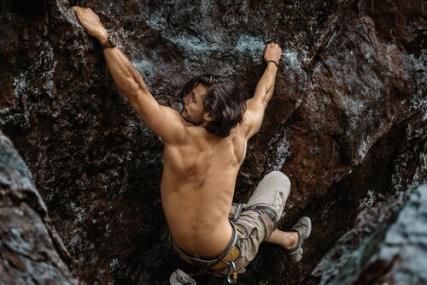Rock climbing is more than just a sport; it’s an exhilarating adventure that challenges both your physical and mental limits. Whether you’re a seasoned climber or a complete beginner, the allure of scaling towering rock faces is undeniable. In this comprehensive guide, we’ll delve into the world of rock climbing, exploring its various forms, essential gear, safety precautions, and popular climbing destinations.
Types of Rock Climbing
Rock climbing comes in a variety of forms, each with special difficulties and benefits.
- Sport Climbing: This popular style involves climbing pre-bolted routes, where climbers use quickdraws and carabiners to clip themselves into bolts drilled into the rock.
- Traditional Climbing (Trad Climbing): In traditional climbing, climbers place their own protection, such as cams and nuts, into cracks in the rock as they ascend. This requires a higher level of technical skill and risk assessment.
- Bouldering: This type of rock climbing focuses on short, intense climbs, often without ropes. Bouldering involves climbing low-height problems, often with the aid of crash pads for protection.
- Aid Climbing: This style involves using specialized gear, such as ladders and pitons, to ascend difficult sections of rock. Aid climbing is often used for big-wall climbs, where climbers spend multiple days on the wall.
Essential Gear for Rock Climbing
To get started with rock climbing, you’ll need a few essential pieces of gear:
- Harness: A harness is a safety device that secures you to the rope.
- Climbing Shoes: Climbing shoes provide excellent grip and precision on the rock.
- Rope: A strong, durable rope is essential for securing yourself during a climb.
- Belay Device: A belay device helps you control the rope and keep your climbing partner safe.
- Carabiners: These metal connectors attach the rope to your harness and the protection points on the rock.
- Helmet: A helmet protects your head from falling rocks and other hazards.
Safety First: Tips for Safe Rock Climbing
Safety is paramount when rock climbing.Here are some crucial safety pointers to remember:
- Take a Climbing Course: Enrolling in a climbing course will teach you the fundamental skills and techniques of rock climbing.
- Climb with a Partner: Always climb with a competent partner who can belay you and assist in case of an emergency.
- Inspect Your Gear: Regularly inspect your gear for wear and tear and replace any damaged items.
- Communicate Clearly: Effective communication with your climbing partner is crucial for a safe and enjoyable climbing experience.
- Recognize Your Limits: Don’t overextend yourself.Begin with simpler ascents and work your way up to more difficult ones.
- Be Aware of the Weather: Avoid climbing in adverse weather conditions, such as thunderstorms or high winds.
Popular Rock Climbing Destinations
If you’re looking for exciting rock climbing destinations, here are a few popular choices:
- Yosemite National Park, USA: This iconic park offers a wide range of climbing opportunities, from beginner-friendly crags to world-class big-wall climbs.
- El Chaltén, Patagonia, Argentina: This remote town is a paradise for climbers, with stunning granite peaks and challenging routes.
- Red River Gorge, Kentucky, USA: This region boasts thousands of sport climbin’g routes, making it a popular destination for climbers of all levels.
- Fontainebleau Forest, France: This forest is renowned for its bouldering potential, with countless problems ranging from easy to extremely difficult.
- Krabi, Thailand: This tropical paradise offers stunning limestone cliffs and world-class sport climbing routes.
Conclusion
Rock climbin’g is a thrilling and rewarding sport that offers endless opportunities for adventure and personal growth. By following the safety guidelines, acquiring the necessary gear, and seeking guidance from experienced climbers, you can embark on a fulfilling climbin’g journey. Remember, the most important aspect of rock climbin’g is to have fun and enjoy the process of conquering new challenges.
FAQs
- Is rock climbin’g dangerous? While rock climbin’g does involve inherent risks, it can be made safer by following proper safety protocols and climbing within your limits.
- Do I need to be physically fit to rock climb? While physical fitness is beneficial, you don’t need to be an athlete to start rock climbin’g. Regular exercise and building upper body strength can help improve your climbing performance.
- What is the best way to learn rock climbin’g? The best way to learn rock climbin’g is by taking a climbin’g course from a certified instructor. They will teach you the essential skills and techniques, as well as safety procedures.
- How much does rock climbin’g gear cost? The cost of rock climbin’g gear can vary depending on the brand and quality. However, you can find affordable options for beginners, and as you progress, you may invest in more specialized gear.
What are some common mistakes made by beginner climbers? Some common mistakes made by beginner climbers include not communicating effectively with their partner, not checking their gear, and pushing themselves beyond their limits.




